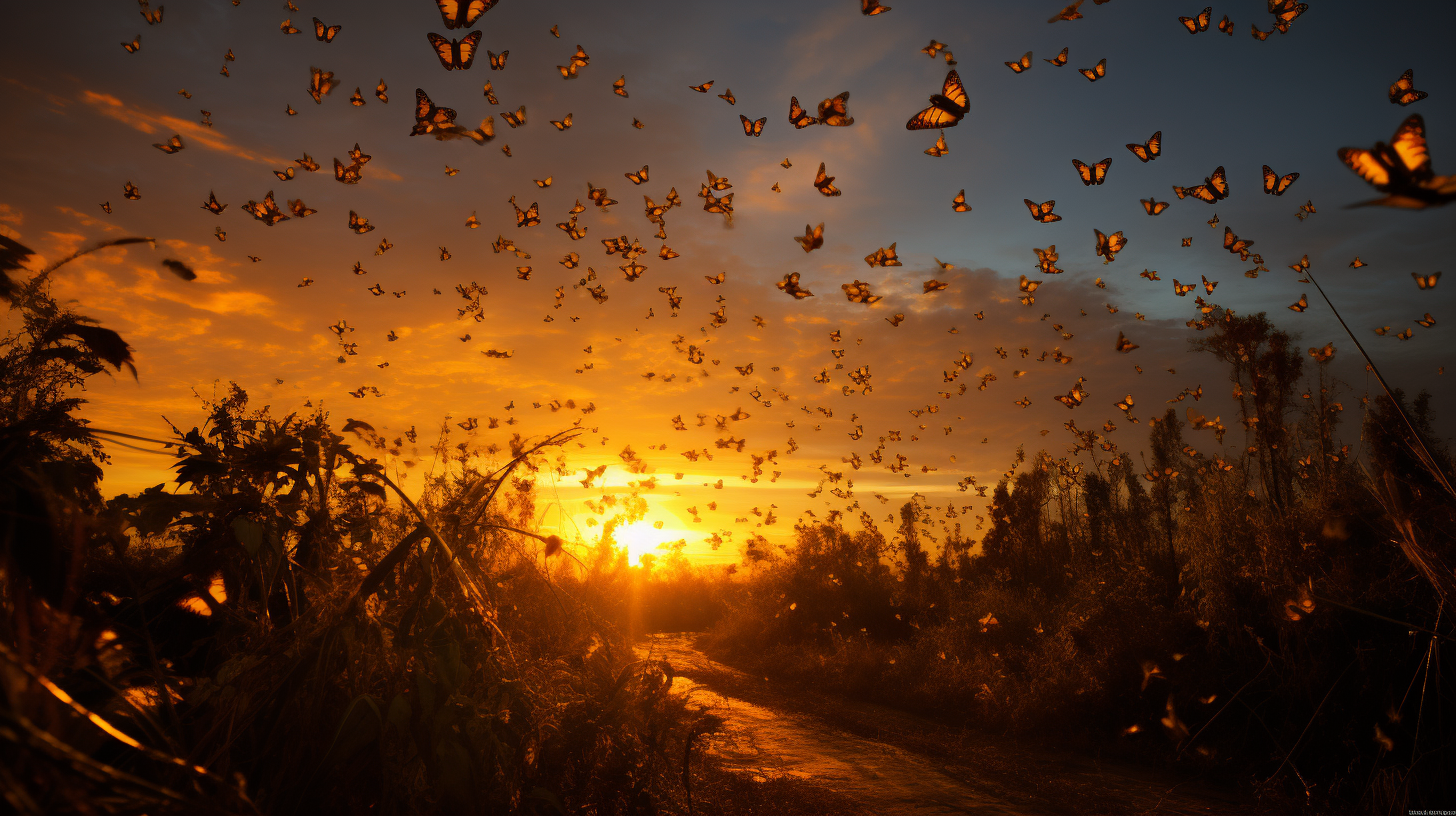In the gloomy palette of nature’s unraveling tapestry, a once-vibrant thread frays at the edges, its colors fading as fast as the sun dips below a smog-smeared horizon. The Monarch butterfly, a mesmerizing pollinator and symbol of fragile resilience, is but a flutter away from silencing its wings forever.
Our recent contemplation, ‘Where Monarchs Dare Not Tread – The Vanishing Butterflies Effect’, sparked a tempest of concern. The alarming decimation of these splendorous creatures is not just a poetic tragedy; it’s the insidious unwinding of a colossal pillar in Earth’s ecosystem: pollination.
Today, we delve deeper into the dire straits facing our tireless flower-whisperers and ponder a profound question: Amidst the relentless choke of environmental ruin, can pollinators carve out new paths of survival? Or, is this dusk one that precedes an eternal night?
The Monarch’s odyssey is already a lepidopteran legend. These insects, once countless, now face the cruel irony of extinction. The verdant corridors that welcomed their migrations are now polluted streams of concrete and sterile plains. With phenomenal adaptability, they have sought remnant patches of milkweed – their larval lifelines – in lands combed by development. But even as scientists scramble to model alternate routes, hope’s flame flickers weakly.
The conundrum of pollinator pathways is not solely the Monarch’s to bear. Bees, hummingbirds, bats, and a host of other species hold starring roles in this potential ecological horror story. Our fruit-laden tables owe a debt to their unseen toils. Yet, as climate change distorts flowering times and pesticide clouds suffocate their arenas, these unsung heroes are left treading an increasingly fractured landscape.
In a twist that scarcely skirts irony’s bitter edge, the all-consuming human influence presents a paradox. Some pollinators, like urban bees, have found havens in unexpected places. Rooftop gardens and city parks sometimes bloom with a richer diversity of plants than the monocultured countryside, and these mini-Edens invite quiet victories amidst the gloom.
Nonetheless, the symphony of pollination is stuttering. The syncopated dance between flora and fauna, honed over millennia, now risks quiet extinction. Every vanishing species unravels a deeper thread in the web of life, a web too many take for granted.
Conservationists and scientists fight battles on fragmented fronts, racing against the clock to preserve, to educate, and to innovate. They draft corridors of rewilded land, sanctuaries of hope in an unforgiving world – but ecosystems are resilient mosaics that defy simple patches. Are we merely buying time?
From urban watering holes of nectar to experimental crops designed to lure lost wanderers, the fight for the Monarchs — and the essence of Earth’s pollination — endures. It treads a fine line between adaptation and the abyss. Yet, each endeavor teaches anew the imperative necessity of balance, symbiosis — a reminder we’re part of the cycle, not above it.
The dusk of the Monarchs may yet be a prelude to new dawns for some pollinators. Making room for nature in our urban sprawls and changing our agricultural tactics could write an eleventh-hour reprieve. Humans, after all, are masterful at last-minute heroics, aren’t we?
Even as this dystopian tale unfurls its dark narrative, pockets of resistance persist. It’s a tale that doesn’t indulge in optimistic endings, but the chapters are still being written. The final word lies unwritten, blurred by the smog of our own making, awaiting our collective decision to turn the page or close the book.
Perhaps, in the end, it is not the absence of hope but its transformation we must wrestle with. The dream of restored environmental harmony may teeter on fantasy, but the will to craft new paths for pollinators, even in the dimming light, pulses stubbornly. For in the dusk, we can sometimes find the stars.
